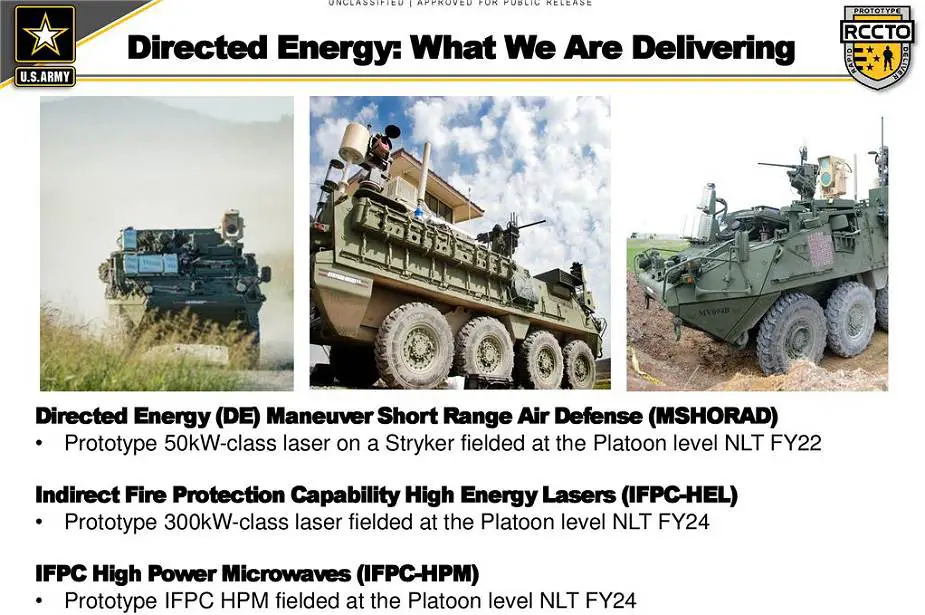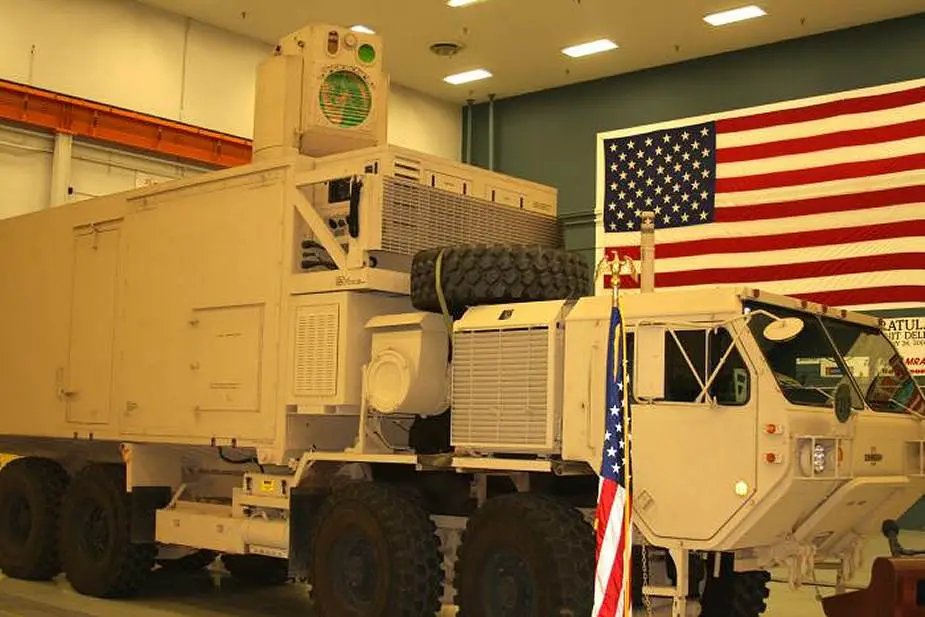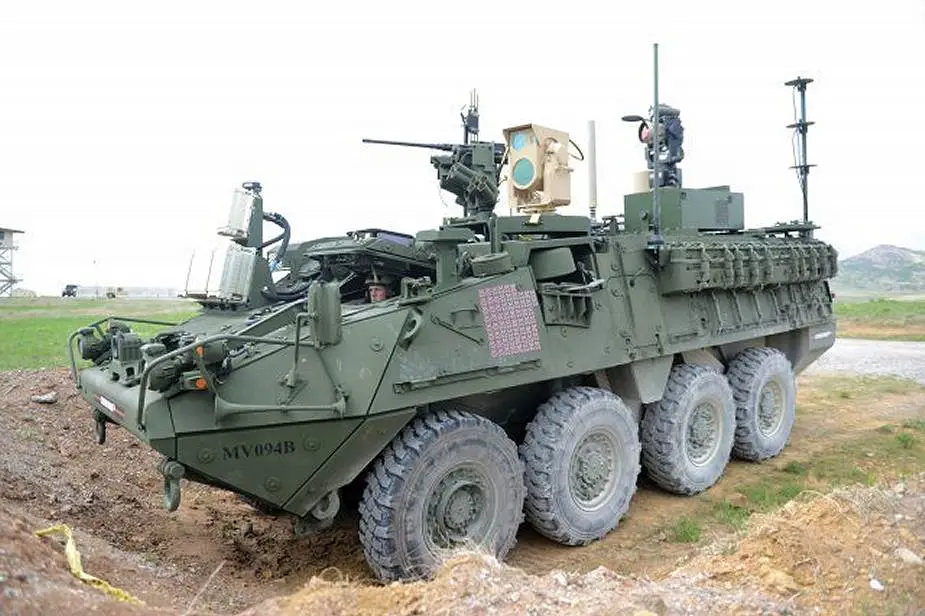Development of Direct Energy Laser Weapons is top priority for US armed forces
According to information published by the United States Department of Defense, on August 11, 2020, the development of direct energy laser weapons is a top priority for the U.S. Armed Forces. Laser systems will be a new generation of weapons that could be an alternative to shot down threats of the modern battlefield as drones, artillery ammunition, rockets, or missiles.
Follow Army Recognition on Google News at this link

United States Army has launched a number of programs for the development of Direct Energy Laser Weapons. (Picture source U.S. DoD)
According to a U.S report, the U.S. armed forces have a long and complicated history in developing directed energy (DE) weapons. Many past efforts have failed for a variety of reasons and not all failures were attributed to scientific or technological challenges associated with weaponizing DE. At present, a number of U.S. military DE weapons-related programs are beginning to show promise, such as the Navy’s Laser Weapon System (LaWs), the first ever Department of Defense (DOD) laser weapon to be deployed and approved for operational use, according to the U.S. Navy.
The U.S. Army has also launched laser weapons programs designed to counter rockets, artillery, and mortars (C-RAM) and address certain types of short-range air defense (SHORAD) threats.
According to the U.S. DoD, Direct Energy (DE) Weapon is an umbrella term covering technologies that produce concentrated electromagnetic (EM) energy and atomic or subatomic particles. A DE weapon is a system using DE primarily as a means to incapacitate, damage, disable or destroy enemy equipment, facilities, and/or personnel. Directed-energy warfare (DEW) is military action involving the use of DE weapons, devices, and countermeasures to incapacitate, cause direct damage or destruction of adversary equipment, facilities, and/or personnel, or to determine, exploit, reduce, or prevent hostile use of the electromagnetic spectrum (EMS) through damage, destruction, and disruption.
Tactical High Energy Laser (THEL) development began in 1996 as a joint U.S.-Israeli program to develop a laser system capable of shooting down Katyusha rockets, artillery, and mortar shells. Northrop Grumman was the primary U.S. contractor and several Israeli contractors participated in the program. THEL employed radar to detect and track incoming targets, passing this information to an optical tracking system. A deuterium fluoride (DF) chemical laser would engage targets, causing the incoming rocket or shell to explode short of its intended target.
In 2000 and 2001, THEL shot down 28 Katyusha rockets and 5 artillery shells during operational testing. In August 2004, the system shot down multiple mortar rounds fired both as single rounds and in salvos. In January 2006, after repeated setbacks, cost overruns, and concerns that THEL was too large to be carried on vehicles, the Pentagon canceled the program.

The US Army's High Energy Laser Technology Demonstrator (Picture source U.S. Army)
The U.S. Army has a variety of weapons-related DE initiatives underway as the High Energy Laser Tactical Vehicle Demonstrator (HEL TVD), Multi-Mission High Energy Laser (MMHEL) , Mobile Experimental High Energy Laser, and High Energy Laser Mobile Test Truck (HELMTT).
The HEL TVD program involves the development of a 100 kilowatt-class laser to be mounted on an existing Family of Medium Tactical Vehicles (FMTV) truck to provide a counter rocket, artillery, and mortar (C-RAM) capability to protect fixed sites and also provide limited protection in a mobile mode. In addition, the HEL TVD could be adapted in a short-range air defense (SHORAD) role to protect against cruise missiles and UAVs. Current plans call for USASMDC to build the HEL TVD in FY2021 and demonstrate its capabilities and acquire test data in Fiscal Year FY2022. If successful, USASMDC would eventually like to transition HEL TVD to a Program of Record.
The MMHEL program involves integrating a 50 kilowatt-class laser on a Stryker combat vehicle to provide short-range air defense (SHORAD) support to the Army’s maneuver brigades. The Army plans to continue development of MMHEL from FY2018 thru FY2021 and transition it to a Program of Record sometime after FY2022.
The MEHEL is a system that permits experimentation and provides the soldier with hands-on experience operating a HEL mounted on a Stryker combat vehicle. It currently mounts a 5 kilowatt laser and was used in exercises in 2017, where it was able to defeat a number of small rotary and fixed-wing UAVs.
The HELMTT program involves mounting a 50 kilowatt laser on an existing Heavy Expanded Mobility Tactical Truck (HEMTT) (see Figure 8). HELMTT is being used to collect test data that are expected to be used to develop the next generation of HELs and inform future requirements..

U.S. Army Multi-Mission High Energy Laser (MMHEL) (Picture source U.S. DoD)


























